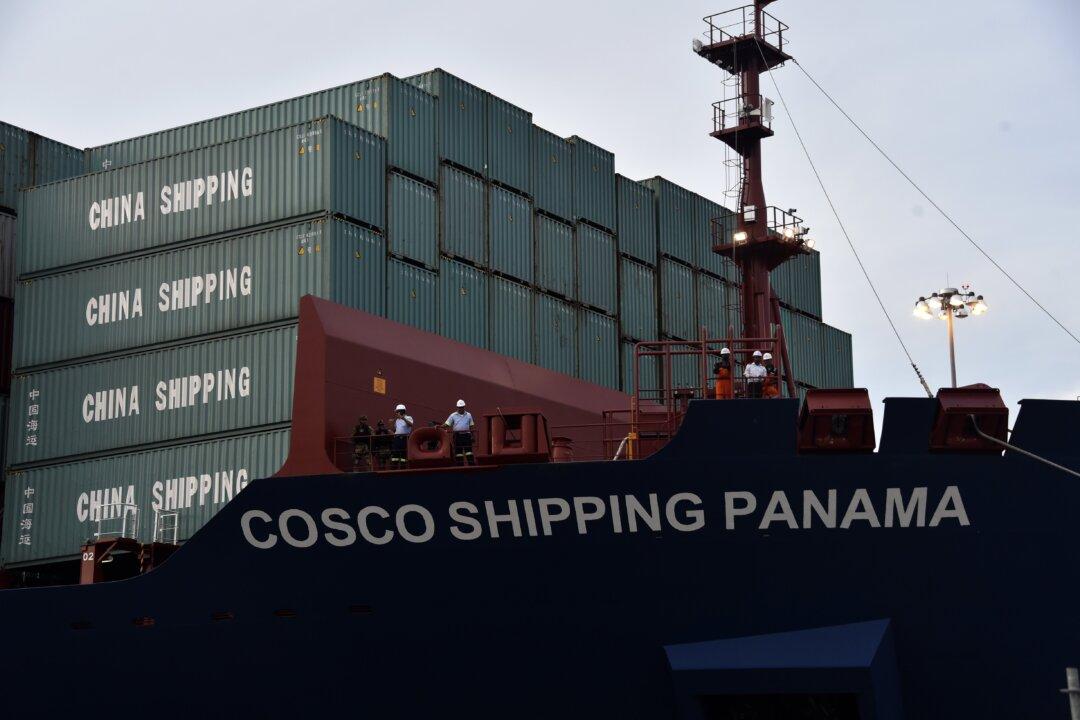Communist China’s control over global ports has far-reaching implications for global trade, security, and geopolitics. It also raises concerns about potential coercion and the possibility of dual-use military applications.
Hutchison Port Holdings (HPH) is a subsidiary of CK Hutchison Holdings, a Hong Kong-based global corporation. HPH operates 53 ports across 24 countries on five continents. The numerous port operations allow the Chinese regime to exert economic influence and apply political leverage across those 24 countries. Furthermore, these operations facilitate data and intelligence collection while maintaining strategic control through chokepoints such as the Panama Canal.
HPH’s recent decision to sell its operations in Balboa, Panama, and Cristóbal, Panama, to BlackRock has met with the expected wrath of Chinese media and chastisement from the Chinese Communist Party (CCP).
Cosco Shipping operates a vast network of ports and shipping routes, including four strategically important European ports. China’s investments in European ports, such as Piraeus in Greece and Zeebrugge in Belgium, have created a level of European dependency on Chinese capital and management. This dependency could limit the European Union’s strategic autonomy in critical infrastructure, and CCP influence has certainly been linked to political outcomes. In 2017, Greece vetoed a European Union statement on the Chinese regime’s human rights record, an action seen as related to China’s investment in Piraeus.
“By potentially sacrificing long-term economic security for short-term financial gain, we have given the CCP the ability to track the movement of goods through our ports or even halt port activity at the drop of a hat,” the committee stated in a report.
Africa is garnering significant attention, as China is positioned to establish more dual-use ports there like the one in Djibouti. Reporting indicates that the People’s Liberation Army (PLA) Navy has made 55 port calls and carried out 19 bilateral and multilateral exercises in Africa since 2000. Beijing’s national strategy includes a “Two Oceans” approach, a key objective for projecting maritime power beyond the first island chain.
In the Indian Ocean, the PLA Navy has expanded its presence to protect critical sea lanes, particularly those linked to China’s energy imports and trade routes. This expansion involves securing the military base in Djibouti and access to ports such as Gwadar in Pakistan and Hambantota in Sri Lanka.
Conclusion
China’s straightforward investments in port infrastructure led to predictable outcomes, such as increased trade and economic growth. However, underlying strategic goals may be overlooked in view of short-term economic gains through contracts under the CCP’s Belt and Road Initiative. This is especially true when weighing the CCP’s majority interest in strategic ports and the potential for commercial and military purposes. Furthermore, geopolitical tensions and trade disputes are likely to create chaotic situations.China’s extensive control over global ports, achieved through state-affiliated companies and strategic investments, has profound implications for global trade, security, and geopolitics. While these investments drive economic growth and connectivity, they also raise concerns about potential coercion and dual-use military purposes. China’s YJ-18C cruise missile has a variant that can be stored and launched from a shipping container. Delivery and storage of this type of system would be virtually invisible at any port where ZPMC handles ship-to-shore operations.
Additionally, the potential to hold logistics databases hostage or redirect critical resources and products presents a significant response dilemma for the U.S. civilian sector. Policymakers and stakeholders worldwide must carefully navigate the multifaceted implications of the CCP’s port influence to ensure a balanced and secure global maritime landscape.







